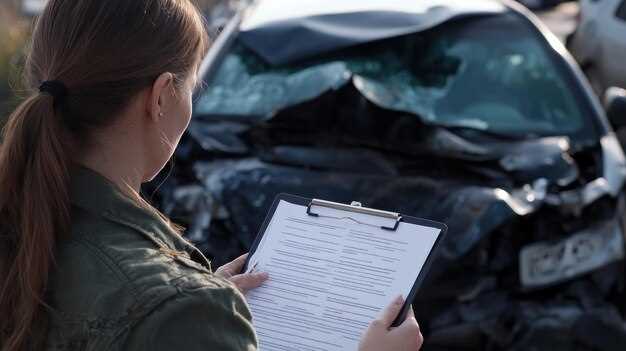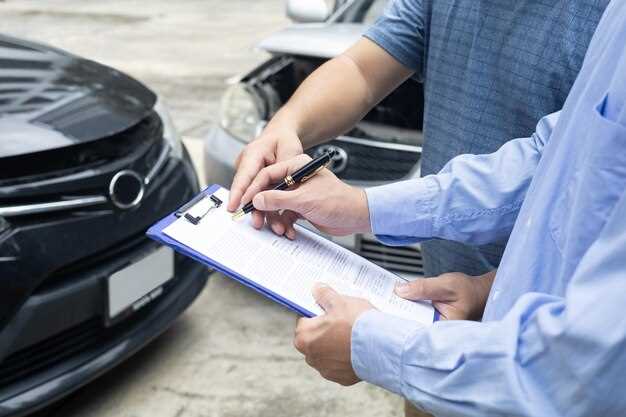
When considering the purchase of a salvage car, understanding the necessary documentation is essential to ensure a smooth transaction. Salvage cars often come with unique challenges, including their history of damage and the specific regulations imposed by the DMV. Having the right papers can make all the difference in securing your investment.
The first step in the process is obtaining the title. A salvage title indicates that the vehicle has been declared a total loss by an insurance company. This title is vital as it provides important information about the car’s status. Buyers must ensure that the title is in the seller’s name and check for any existing liens that could complicate ownership transfer.
In addition to the title, you will need a bill of sale to confirm the transaction details. This document should include essential information such as the purchase price, vehicle identification number (VIN), and the names and signatures of both the buyer and the seller. Proper documentation will not only help you in the DMV process but also protect you against any potential disputes.
Furthermore, depending on your state, you may be required to obtain a salvage inspection before you can register the car for road use. This inspection, typically performed by a licensed inspector, ensures that the vehicle meets the necessary safety standards and has been adequately repaired. Remember to keep all inspection records as they may be required when dealing with the DMV.
Thoroughly understanding the documentation needed for purchasing a salvage car is crucial for achieving a successful acquisition. By preparing the right papers, you can navigate the process more easily and prepare for the road ahead.
Required Paperwork for Buying a Salvage Vehicle
When purchasing a salvage vehicle, it is crucial to gather the necessary paperwork to ensure a smooth transaction and proper registration. The main documents required include the salvage title, bill of sale, and vehicle history report.
The salvage title is a vital document that indicates the vehicle has been declared a total loss by an insurance company. This title must be transferred to your name upon purchase. Verify that the title is clean and matches the vehicle identification number (VIN).
A bill of sale is another essential piece of paperwork that serves as proof of the transaction. This document should include details such as the purchase price, date of sale, buyer and seller information, and a description of the vehicle, including its VIN.
Additionally, obtaining a vehicle history report can provide valuable insights into the car’s past. This report typically includes information about previous accidents, repairs, and maintenance records, allowing you to make an informed decision.
After acquiring these documents, you will need to visit your local DMV to complete the registration process. Depending on your state, there may be additional requirements, such as an inspection of the vehicle or proof of necessary repairs before it can be deemed roadworthy.
Having the correct paperwork not only simplifies the buying process but also helps avoid potential legal issues in the future. Always ensure that you are aware of your state’s specific regulations regarding salvage vehicles to guarantee compliance.
Understanding Salvage Titles and Their Importance

A salvage title is a designation given to a vehicle that has been declared a total loss by an insurance company due to significant damage or theft. This typically occurs when the cost of repairs exceeds a certain percentage of the vehicle’s value. Knowing about salvage titles is crucial for anyone looking to purchase a salvage car, as it directly affects the car’s value, insurability, and the subsequent paperwork needed for ownership transfer.
The importance of a salvage title extends beyond the mere designation of a vehicle’s condition. It serves as a crucial historical record that signals potential buyers about the car’s past. Understanding this title allows buyers to assess the risks associated with purchasing a vehicle that may require extensive repairs or have hidden issues. Importantly, obtaining a salvage title involves necessary paperwork, including previous registration documents, inspection records, and proof of repairs, which must be verified before making a purchase.
Furthermore, a salvage title can impact the resale value of the vehicle. Buyers should be aware that vehicles with salvage titles often have lower market values compared to those with clean titles. However, for some, the possibility of acquiring a reliable vehicle at a reduced price makes understanding salvage titles essential. Prospective buyers must weigh the importance of the title against the potential repair costs and the vehicle’s overall safety and usability.
In summary, understanding salvage titles is vital for anyone considering the purchase of a salvage car. It provides insight into the vehicle’s past, influences the necessary paperwork, and impacts future resale opportunities. Buyers should thoroughly assess the title and accompanying documentation to make an informed decision and ensure a safe investment.
DMV Process for Registering a Salvage Car

Registering a salvage car involves several important steps at the Department of Motor Vehicles (DMV). It is essential to ensure that all documentation is accurate and complete to avoid potential delays in the registration process.
Here is a step-by-step guide to help you through the DMV process:
-
Gather Required Documents:
- Title of the salvage vehicle.
- Proof of ownership (bill of sale or previous registration).
- Inspection certificate (if applicable based on state regulations).
- Photo identification (driver’s license or state ID).
- Proof of insurance for the salvage car.
-
Complete Necessary Forms:
Visit the DMV’s website or local office to obtain the required registration forms specific to salvage vehicles. Ensure to fill out each form completely.
-
Vehicle Inspection:
Some states require a safety inspection of salvage cars. Arrange for an inspection with an authorized facility and retain the inspection report for submission.
-
Pay Fees:
Check with the DMV for applicable registration fees associated with salvage cars. Prepare to pay these fees when submitting your application.
-
Submit Your Application:
Visit your local DMV office to submit all documents and forms in person. Make sure to bring all necessary paperwork to avoid any issues.
-
Receive Your Registration:
Once your application is processed, you will receive a registration certificate and license plates for your salvage vehicle. Keep these documents safe as they are essential for legal driving.
In summary, registering a salvage car at the DMV requires careful preparation and understanding of state-specific requirements. Ensuring you have all necessary documentation and following each step will streamline the registration process.
